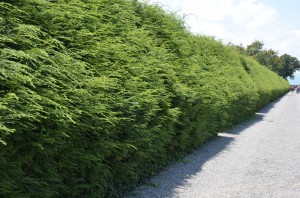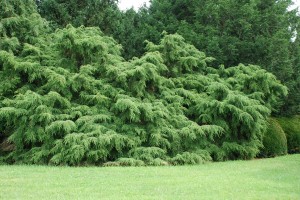Canadian hemlock (Tsuga canadensis) is a native evergreen species which is available in many forms: prostrate, globose, weeping, fastigiate and variegated (USDA Hardiness Zones 3-7). Its tremendous versatility as a hedging tree or shrub in planting sites is also a great reason to continue to include hemlock in the landscape. Hemlock may be planted in full sun to moderate shade and does quite well.
Negative publicity continues hurt the sales of this evergreen. For nearly a half century, hemlock wooly adelgid, a serious insect pest from eastern Asia, has devastated hemlocks in the eastern U.S. forest lands. Adelgid infestations continue to move across the country.
Plant scientists have developed workable strategies for nursery producers and homeowners to combat wooly adelgids. In addition, the severe winter weather of 2013-14 reduced adelgid populations in large landscapes and forest lands. Parasitic beetle releases in state forests are helping to reduce adelgid numbers. Pesticides continue to be very effective in managing this pest without environmentally damaging the treated areas.
The American Conifer lists over 250 cultivars of just Canadian hemlock. Many are slow-growing and somewhat pendulous.
Short List of Cultivars to Plant…
‘Cole’s Prostrate’ or ‘Cole’ – slow-growing, ground hugger ideal for rock gardens; or graft on a short standard; 3 feet after 10 years.
‘Everitt Golden’ – new spring growth with golden tints; compact 5 feet high by 4 feet wide shrub after 10 years.
‘Frosty’ – white tipped new spring growth that fades; 3-6 feet globe form after 10 years.
‘Gentsch White’ – slow-growing, globe form with variegated branch tips; 5-6 feet after 10 years.
‘Jeddeloh’- mounding or nest-like habit; 3-6 feet height after 10 years.
‘Lewis’ – dwarf with upright branched; 3-6 feet height after 10 years.
‘Sargentii’ – aka ‘Pendula’, broad spreading weeping form that can reach more than 10 feet high and 20 feet wide.
‘Watnong Star’ – new shoots almost white; needle arrangement appears star-like on strong 2-inch to 2½-inch shoots.
Worldwide, there are five other major species of hemlock other than Canadian hemlock. They are Carolina hemlock (T. caroliniana), western hemlock (T. heterophylla), mountain hemlock(T. mertensiana), and Southern Japanese hemlock (T. sieboldii), and Northern Japanese hemlock (T. diversifolia).



 Posted in
Posted in 
